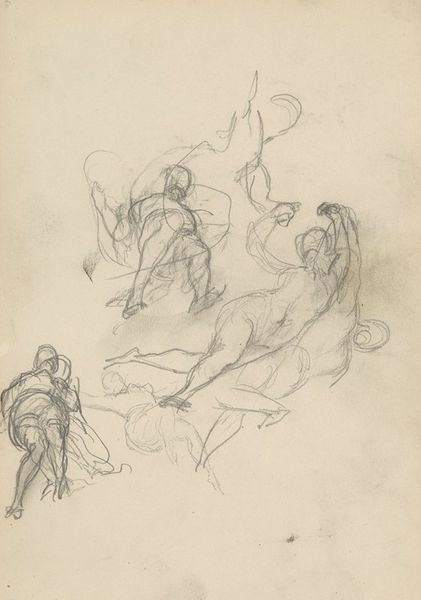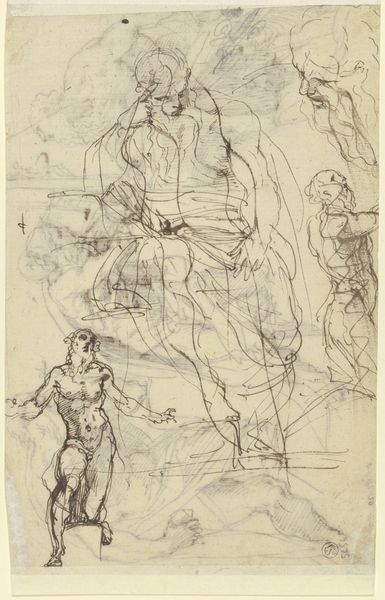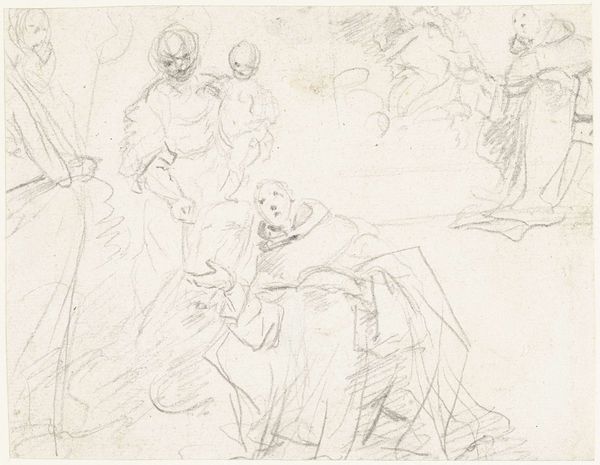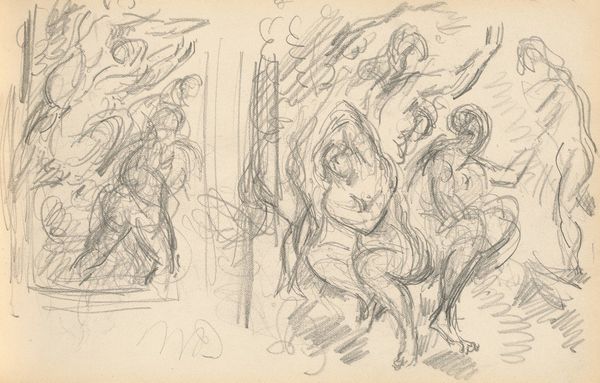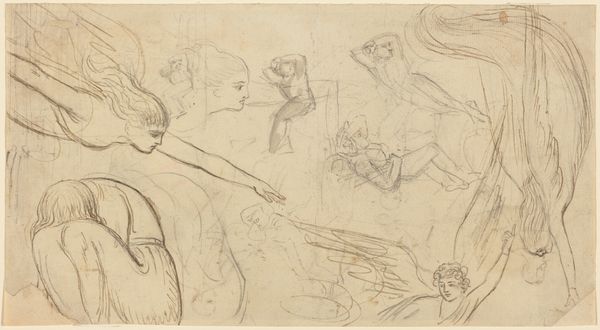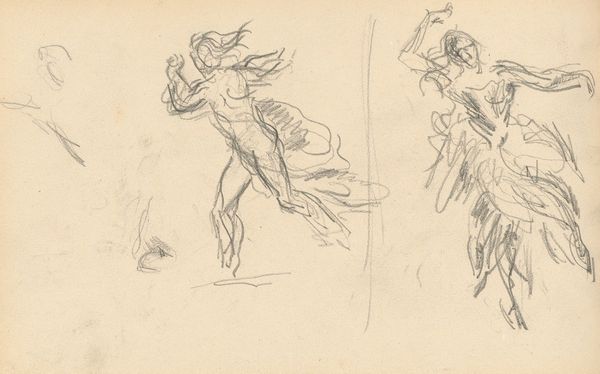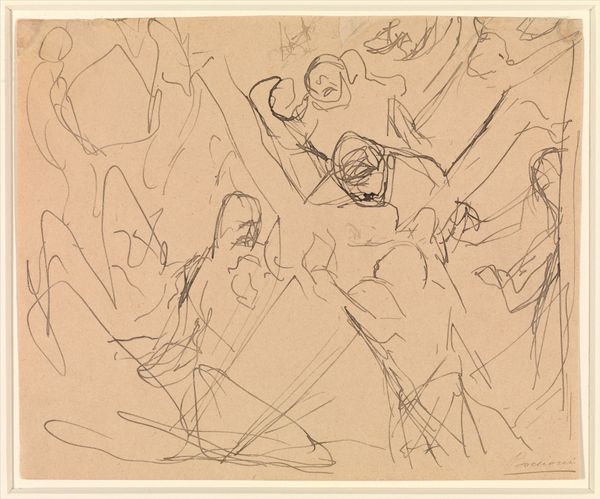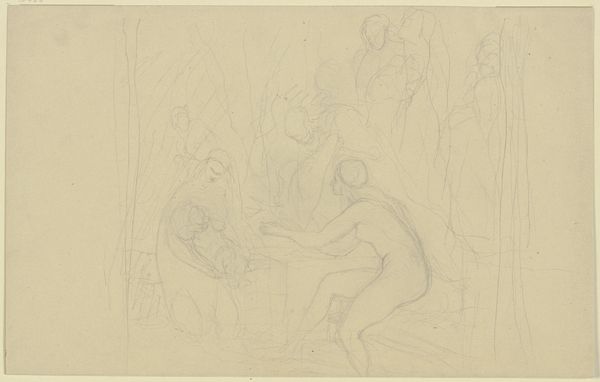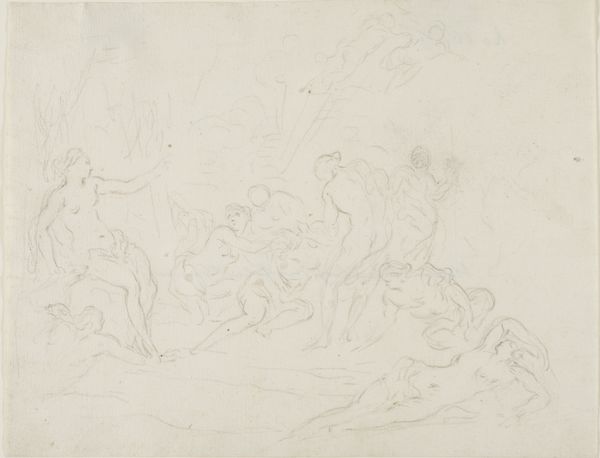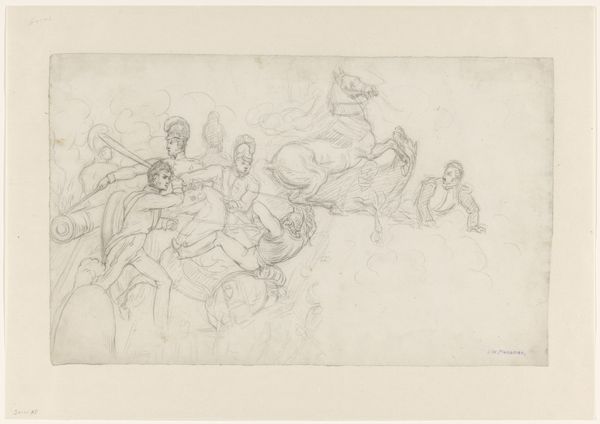
drawing, pencil
#
drawing
#
light pencil work
#
ink drawing
#
pen sketch
#
pencil sketch
#
figuration
#
personal sketchbook
#
ink drawing experimentation
#
pen-ink sketch
#
pencil
#
sketchbook drawing
#
pencil work
#
history-painting
#
post-impressionism
#
sketchbook art
Copyright: Public Domain: Artvee
Curator: This is a drawing by Paul Cézanne, titled "Study for ‘The Judgement of Paris’ or ‘The Amorous Shepherd’," created sometime between 1883 and 1886. It’s rendered in pencil, offering us a glimpse into the artist’s process. Editor: It feels very… gestural. The lines are light, almost tentative, like he's trying to capture movement rather than detail. There’s a real sense of dynamism, but also uncertainty. Curator: Absolutely. And this connects with the evolving societal role of art. Cézanne moved away from the academic traditions that valued polished finishes. He embraced the sketch as a valuable form of art itself, one that embodies experimentation. Editor: For me, the focus on line, on the contours of the figures, creates an interesting tension. The space they inhabit feels unresolved, almost dreamlike, and there are hatching lines around them. The figures dominate. Curator: You're touching on something essential. Look how Cézanne flattens the space and presents the figures without clear perspectival cues. This was his way of challenging established pictorial conventions, aligning himself with a group of other Post-Impressionists seeking new languages of form and representation. The Judgment of Paris itself, of course, is heavy with connotations around ideal beauty and male desire, themes Cézanne seems to be grappling with. Editor: The raw energy is striking. I keep coming back to the incomplete quality; there is beauty and a visual richness in that lack of resolution. What did it mean at the time to present something so rough-hewn as a serious artwork? Curator: That was exactly the question society had to address. There was huge public interest. And, Cézanne, through this technique, gave the art world permission to appreciate process over polish. That idea reshaped not just painting, but what art means to people even today. Editor: A fascinating glimpse into how the unfinished can be profoundly compelling. It prompts one to consider the beauty in incompleteness, the dynamism within suggested forms. Curator: And it serves as a testament to the enduring power of an artist's exploration, both for its own time and as a beacon for later generations.
Comments
No comments
Be the first to comment and join the conversation on the ultimate creative platform.
